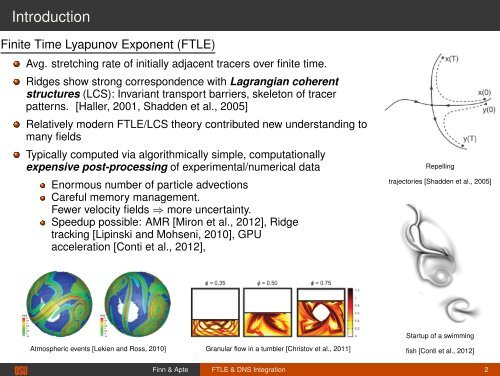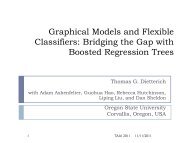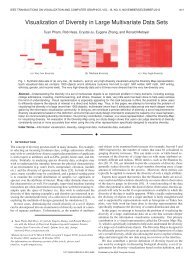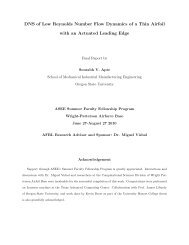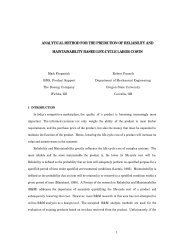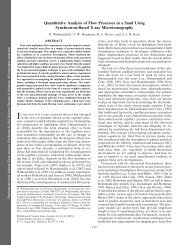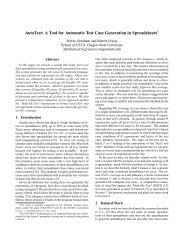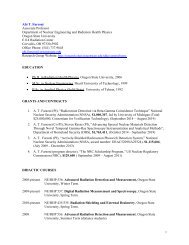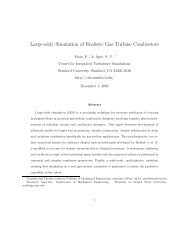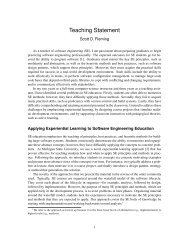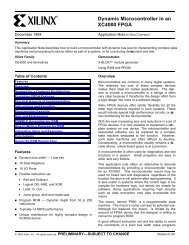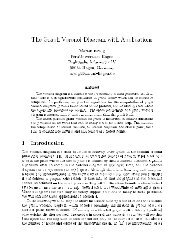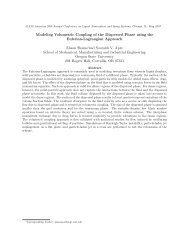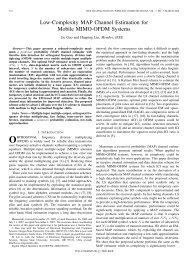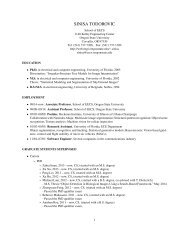Integrated Computation of Finite Time Lyapunov Exponent During ...
Integrated Computation of Finite Time Lyapunov Exponent During ...
Integrated Computation of Finite Time Lyapunov Exponent During ...
You also want an ePaper? Increase the reach of your titles
YUMPU automatically turns print PDFs into web optimized ePapers that Google loves.
Introduction<br />
<strong>Finite</strong> <strong>Time</strong> <strong>Lyapunov</strong> <strong>Exponent</strong> (FTLE)<br />
Avg. stretching rate <strong>of</strong> initially adjacent tracers over finite time.<br />
Ridges show strong correspondence with Lagrangian coherent<br />
structures (LCS): Invariant transport barriers, skeleton <strong>of</strong> tracer<br />
patterns. [Haller, 2001, Shadden et al., 2005]<br />
Relatively modern FTLE/LCS theory contributed new understanding to<br />
many fields<br />
Typically computed via algorithmically simple, computationally<br />
expensive post-processing <strong>of</strong> experimental/numerical data<br />
Enormous number <strong>of</strong> particle advections<br />
Careful memory management.<br />
Fewer velocity fields ⇒ more uncertainty.<br />
Speedup possible: AMR [Miron et al., 2012], Ridge<br />
tracking [Lipinski and Mohseni, 2010], GPU<br />
acceleration [Conti et al., 2012],<br />
Repelling<br />
trajectories [Shadden et al., 2005]<br />
Atmospheric events [Lekien and Ross, 2010] Granular flow in a tumbler [Christov et al., 2011]<br />
Startup <strong>of</strong> a swimming<br />
fish [Conti et al., 2012]<br />
Finn & Apte FTLE & DNS Integration 2


